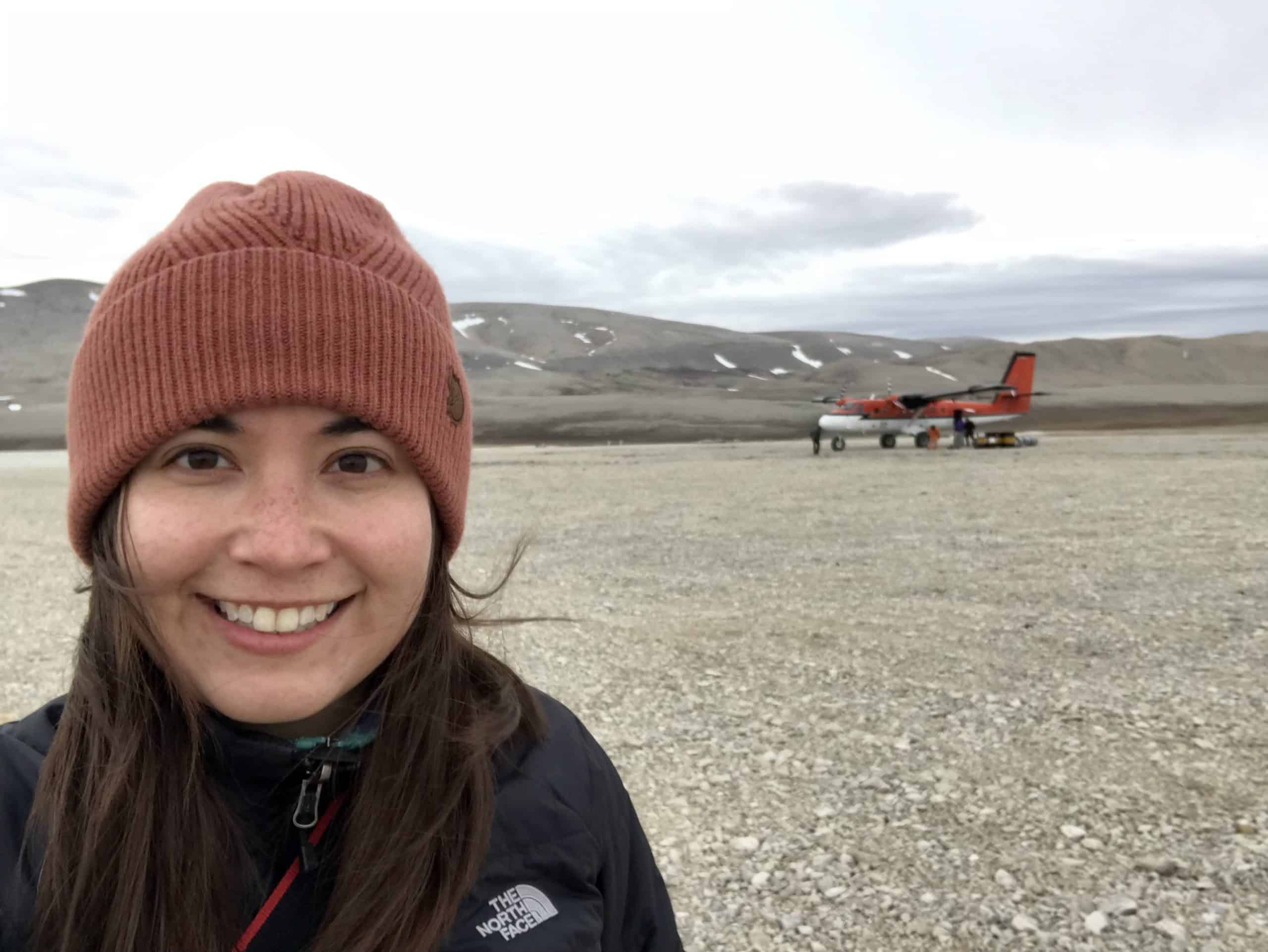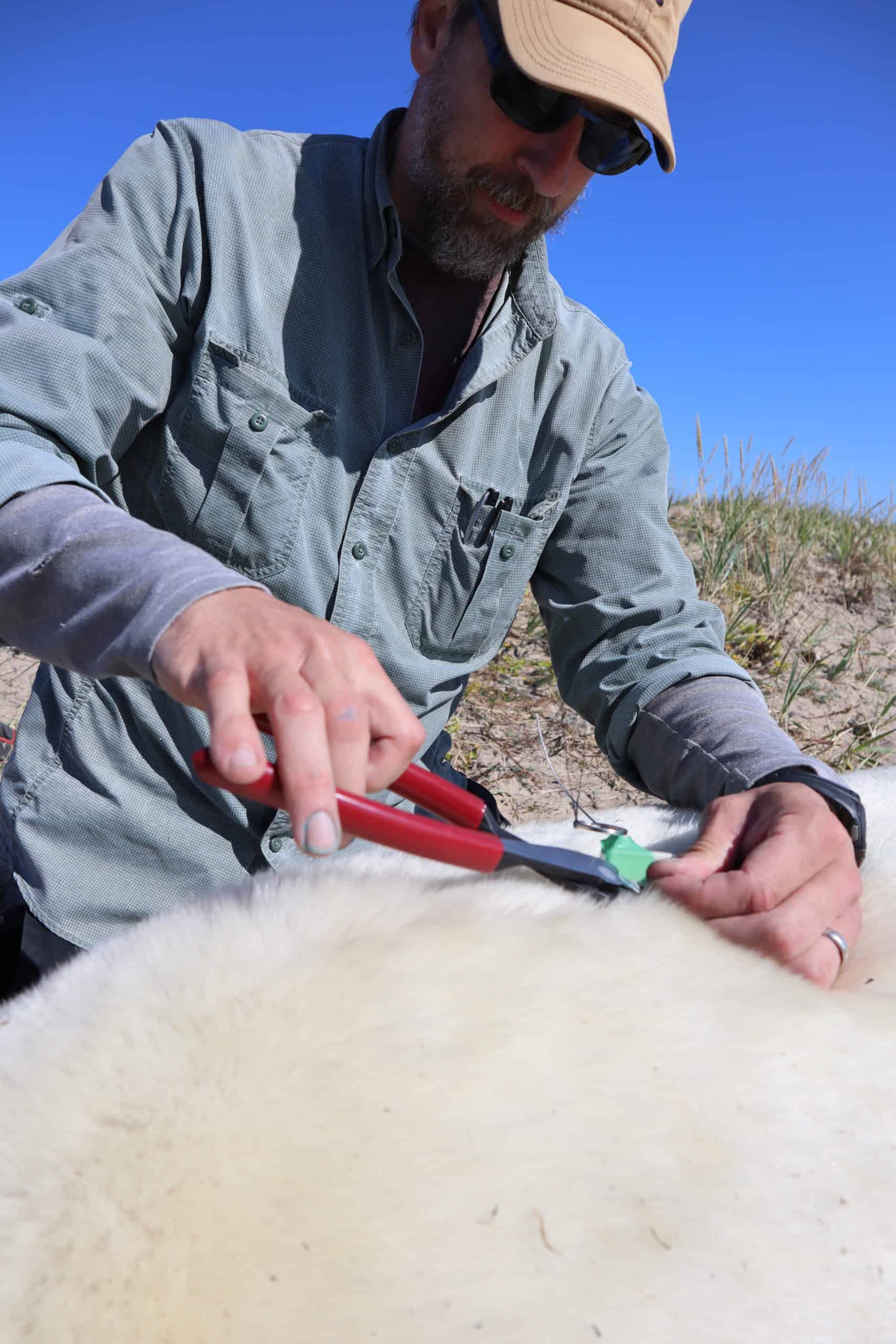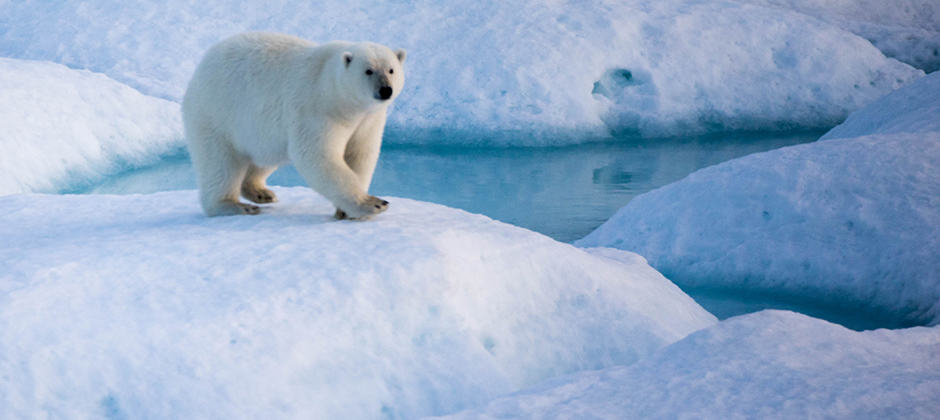Share this article
Polar bear diets reveal a changing Arctic
As the climate warms in the Arctic—two to three times faster than in the rest of the world—polar bears are changing what they eat. By uncovering their diets, researchers found, they can learn about more than just polar bears. They can see how the animals they eat are faring in the ecosystem—information that for many species isn’t easy to find otherwise.
“A lot of marine mammals like ringed seals, narwhals or belugas tend to migrate,” said researcher Melissa Galicia. “Working in the Arctic is really challenging, and on top of that, since they’re moving really far distances, it’s hard to track them and observe how they are changing in local areas.”
As part of her PhD research at York University, Galicia had been studying polar bear (Ursus maritimus) diets for a while. But she began to wonder if what they’re eating could tell her about more than just polar bear health. Could it also uncover information about the ecosystem’s health? To find out, Galicia led a study in collaboration with the Government of Nunavut and Fisheries and Oceans Canada published in Ecological Indicators to test whether understanding polar bear diet in Nunavut could reveal how marine mammals were doing there.

Researcher Melissa Galicia has been studying polar bear diets for years.
Credit: Courtesy Melissa Galicia
“The whole idea for this research was that we could potentially use the diet of polar bears to see and identify if there have been changes in distribution of prey,” said Galicia, who is now a wildlife biologist for Environment and Climate Change Canada. “We wanted to see if we could use this tool as a starting point. Hopefully in the future we could continue to monitor polar bear diet and start to pick up on those changes faster than you would have if you were to use more conventional methods like tracking marine mammals.”
To conduct the study, she and her colleagues obtained polar bear fat samples collected across Nunavut by Indigenous hunters, who may legally harvest polar bears through a quota system. Because the samples were collected year round throughout the region, the team was able to collect a large dataset, covering all seasons across a large area.
Galicia and her colleagues analyzed the samples looking for fatty acid signatures like Omega 3. The researchers then compared these dietary fingerprints with the signatures of prey species to piece together how much various marine mammals contributed to polar bear diets. By modeling the proportions, they could identify geographic hot spots for each prey species.

Thiemann takes a fat biopsy from a polar bear in the field.
Credit: Courtesy Melissa Galicia
“We could make certain inferences and try to piece together the story of where the prey are found, and if they are found in that particular area during a good period of time that the bears could access them,” she said. That’s particularly important for polar bears, Galicia said, since they need sea ice to reach their prey.
The tool worked, and it revealed some interesting findings. In the Davis Strait, between Nunavut’s Baffin Island and Greenland, they found that polar bears consumed lots of harp seals (Pagophilus groenlandicus). That was a different situation from Foxe Basin, a shallow oceanic basin north of the Hudson Bay. There, polar bears were consuming the carcasses of bowhead whales (Balaena mysticetus) that washed ashore after killer whales (Orcinus orca) ate parts of them—like their throats and tongues—and left the rest behind.
Those massive carcasses can act as a supplemental food source for polar bears for up to a year. But their presence reflected important changes in the region. Heavier sea ice conditions once kept killer whales out of Foxe Basin, but when the ice melted, killer whales began coming in more and more frequently.
Galicia hopes to keep tracking these changes. “It would be really great to monitor a sort of complete regime shift of a new top predator in the Arctic and how that’s creating a shift with other species,” she said.
The same fatty tissues gathered annually could also reveal other clues about the ecosystem, Galicia said, including body condition of polar bears and the presence of contaminants prevalent in the Arctic.
Header Image: By studying polar bear diets, researchers can learn about their prey in the ecosystem. Credit: Se Mo








